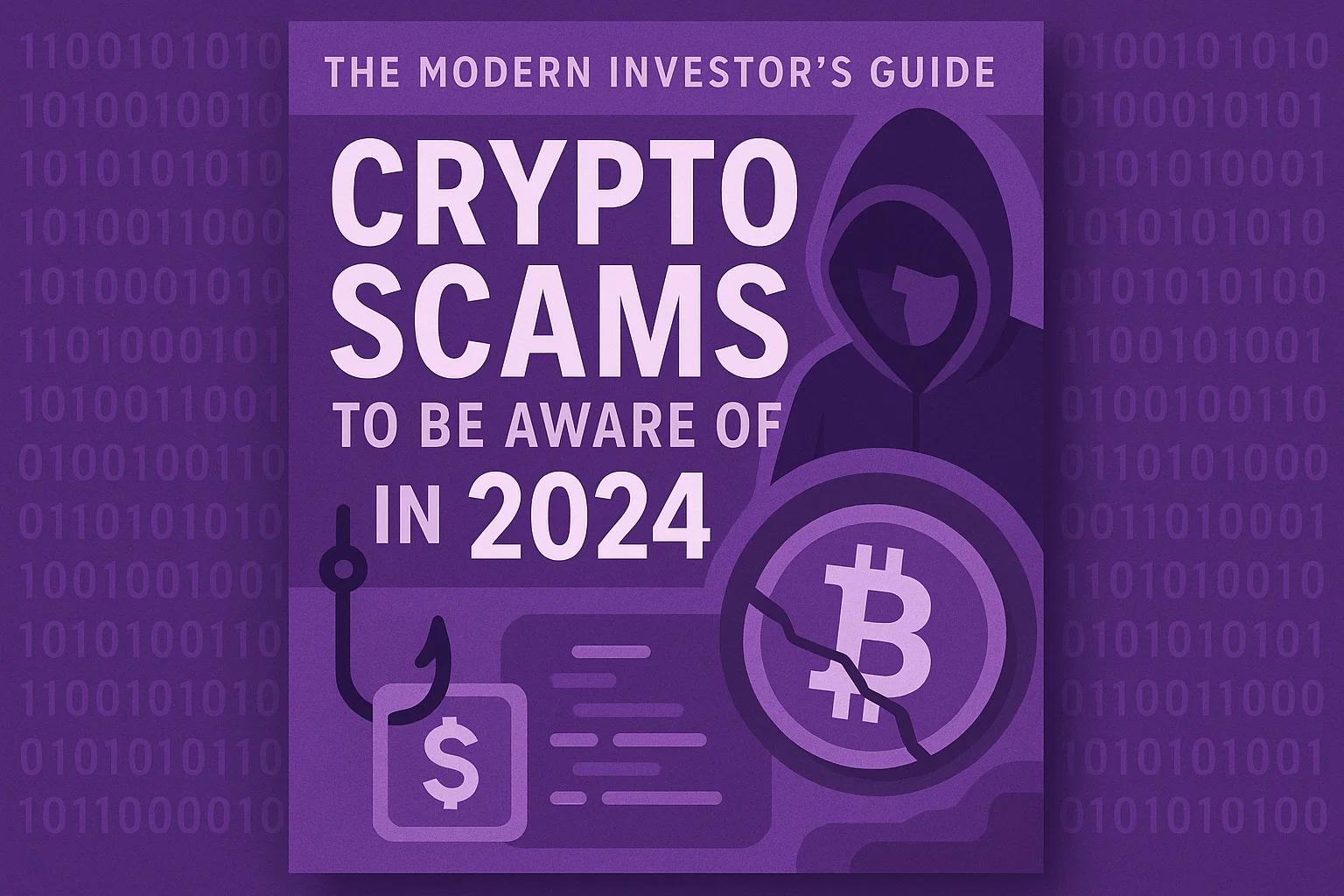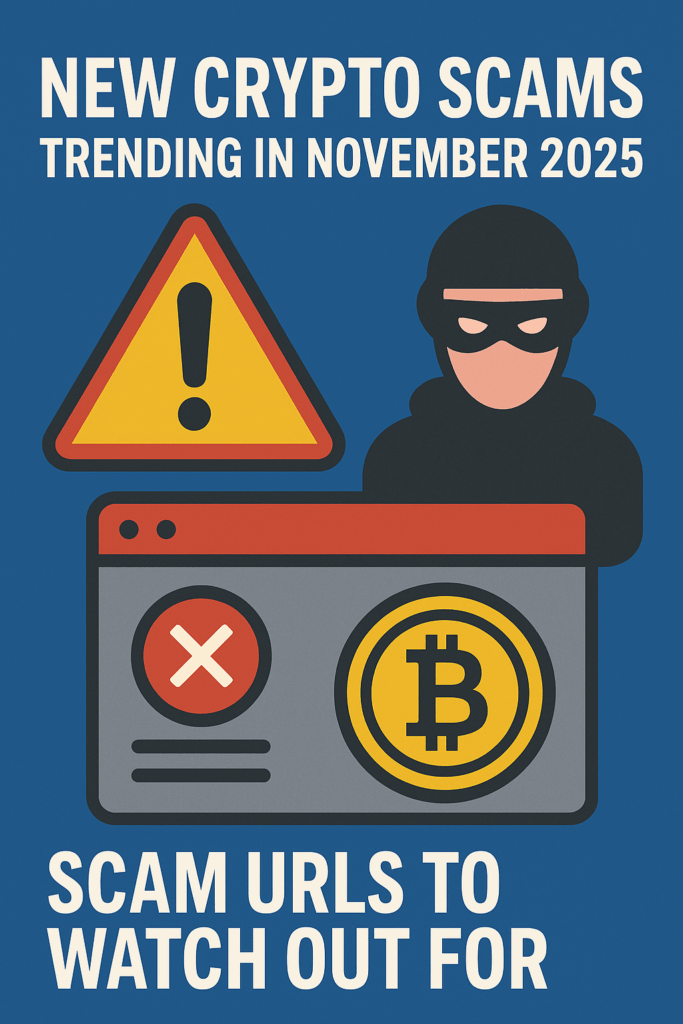The cryptocurrency revolution has unlocked incredible financial potential, but it has also opened the floodgates for a new era of sophisticated fraud. As digital assets become more mainstream, scammers are refining their tactics, employing social engineering, deepfakes, and complex smart contracts to separate investors from their funds.
Staying safe is no longer just about having a strong password; it’s about understanding the landscape of threats. This guide breaks down the most common and dangerous crypto scams of 2024, providing you with the knowledge to identify and avoid them.
1. Phishing Scams: The Digital Bait and Hook
How it works: Scammers create near-perfect replicas of legitimate websites—like Binance, Coinbase, or MetaMask—and lure victims via email, SMS, or social media ads. These messages create a sense of urgency (“Your account will be suspended!”) and trick you into entering your login credentials or seed phrase on the fake site.
- Red Flags: Urgent language, misspelled URLs (e.g.,
binance-support.cominstead ofbinance.com), unsolicited requests for your seed phrase. - How to Avoid: Always double-check URLs. Never click links in unsolicited messages. Bookmark the official sites you use and enable two-factor authentication (2FA) everywhere.
2. Pig Butchering Scams (Sha Zhu Pan): A Slow Burn
How it works: This long-term, sophisticated scam combines fake romance with investment fraud. A scammer builds trust with a victim over weeks or months on dating apps or social media. They then casually introduce a “foolproof” crypto investment opportunity. Victims are guided to a fake trading platform, see fake profits grow, and are encouraged to invest more until the scammer disappears with everything.
- Red Flags: Unsolicited romantic contact, refusal to video call, and any mention of a “can’t-miss” crypto opportunity from someone you’ve never met.
- How to Avoid: Be extremely wary of anyone you meet online who talks about crypto investments. Never send crypto to someone you only know digitally.
3. Rug Pulls: The Exit Strategy
How it works: Developers promote a new, exciting cryptocurrency or NFT project, driving up its value and market hype. Once a significant amount of money is invested, the founders suddenly withdraw all the liquidity from the project’s pools, causing the token’s value to crash to zero. Investors are left with worthless tokens.
- Red Flags: Anonymous development teams, excessive hype with no utility, and locked liquidity that can be removed by a single entity.
- How to Avoid: Invest only in projects with doxxed (publicly known) teams, audited smart contracts, and locked liquidity that is proven to be secure.
4. Fake Giveaways and Celebrity Impersonations
How it works: Scammers create fake websites and social media posts pretending to be celebrities like Elon Musk or Vitalik Buterin. They promise to “double” any crypto sent to a specific wallet address. Tweets or YouTube live streams are deepfaked to make the offer seem legitimate.
- Red Flags: Offers that are too good to be true, fake verified accounts (often with a slight misspelling in the handle), and requests to “send crypto first.”
- How to Avoid: Remember: no legitimate person or company will ever ask you to send crypto to receive more. Ignore all giveaway announcements.
5. Ponzi and High-Yield Investment Programs (HYIP)
How it works: These classic scams are rebranded for crypto. They promise unsustainably high, guaranteed returns (e.g., “1% daily return”). Early investors are paid out with funds from new investors, creating the illusion of a legitimate business. The scheme collapses once recruiting new victims becomes impossible.
- Red Flags: Guaranteed returns, complex compensation plans focused on recruiting others, and unclear revenue sources.
- How to Avoid: Be skeptical of any investment promising low risk and high returns. If the business model isn’t clear and simple, it’s likely a scam.
6. Fake Exchanges and Trading Platforms
How it works: Scammers create professional-looking trading platforms (like the fictional “Payback Capitals” or “Bitcoin Profit”). They offer “AI-powered trading bots” or “secret algorithms” and often use aggressive online advertising. Users can deposit funds but will find it impossible to withdraw, facing endless fees and excuses.
- Red Flags: Lack of regulatory licensing, pressure to deposit quickly, and poor online reviews from independent sources.
- How to Avoid: Only use well-known, regulated exchanges. Always check a platform’s licensing information before depositing any funds.
7. Cloud Mining Scams
How it works: Companies offer to sell you a share of their mining hardware’s power for a monthly fee, promising a share of the profits. Many are complete fakes, providing no mining power at all. Others operate at a loss until they inevitably shut down and disappear with user funds.
- Red Flags: Unrealistic profitability estimates, hidden fees, and long-term contracts that are hard to cancel.
- How to Avoid: Given the current state of crypto mining, most cloud mining offers are unprofitable or outright scams. It’s best to avoid them entirely.
8. Romance Scams
How it works: Similar to Pig Butchering but often without the fake platform. A scammer builds a romantic relationship online and then creates a fabricated emergency (a sick relative, a stuck business deal) asking for financial help in cryptocurrency because it’s “fast and untraceable.”
- Red Flags: A online romantic partner who asks for money, especially in crypto, is always a scam.
- How to Avoid: Never send money to someone you have not met in person.
What To Do If You’ve Been Scammed
- Act Immediately: Time is critical. The faster you act, the higher the chance of potentially recovering funds.
- Gather Evidence: Collect all relevant information: transaction IDs (TXID), wallet addresses, screenshots of conversations, and website URLs.
- Report the Crime: File reports with your local law enforcement and relevant cybercrime units (e.g., FTC, IC3, Action Fraud).
- Seek Professional Help: The process of tracing crypto and engaging with exchanges is complex and requires expertise.
Have you fallen victim to a crypto scam?
The emotional and financial damage can be overwhelming. The experts at CyberClaims specialize in investigating crypto fraud and tracing stolen digital assets. We have a proven track record of helping victims fight back.
Don’t navigate this alone. Contact us for a free, confidential consultation to explore your recovery options.









